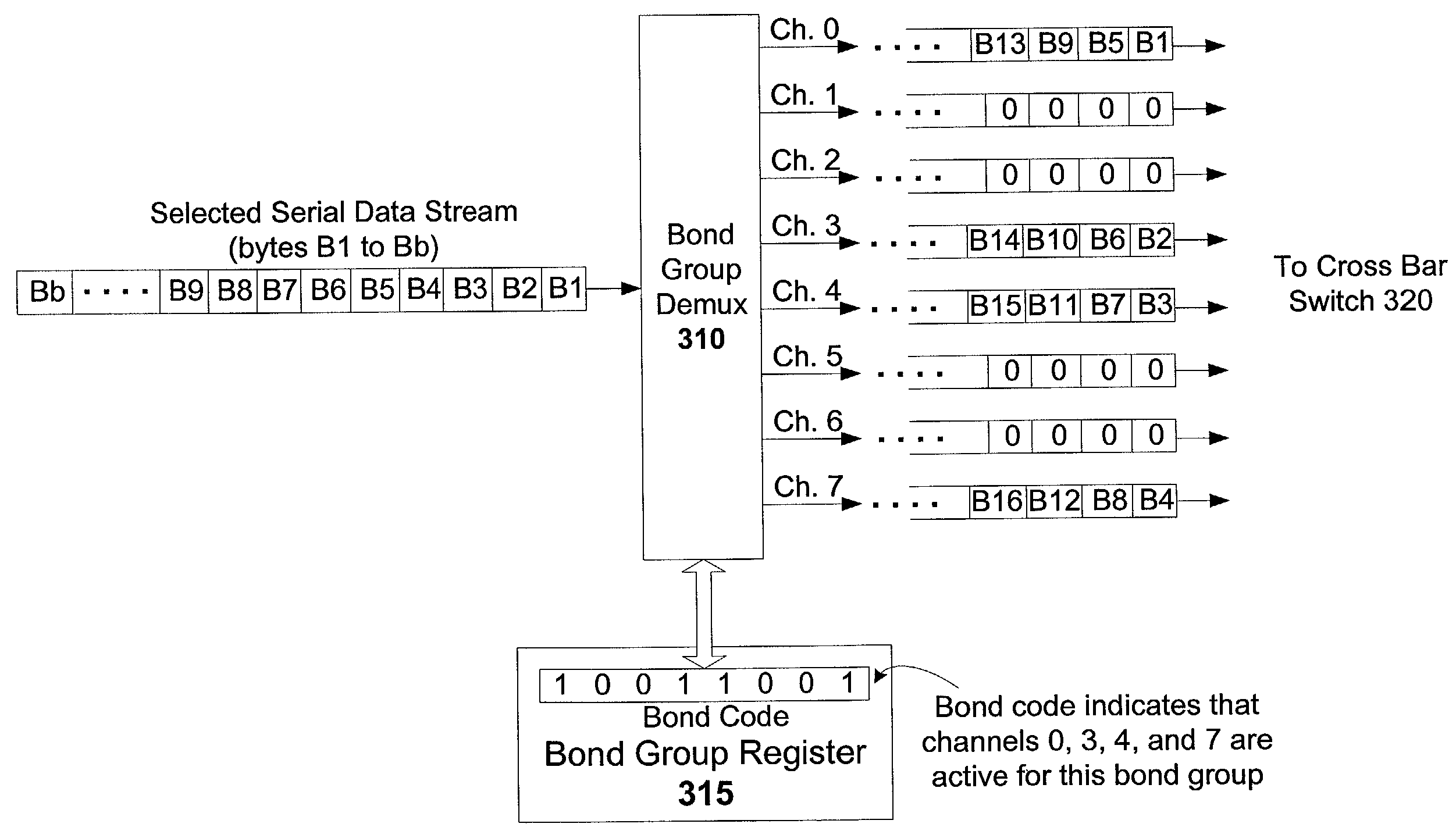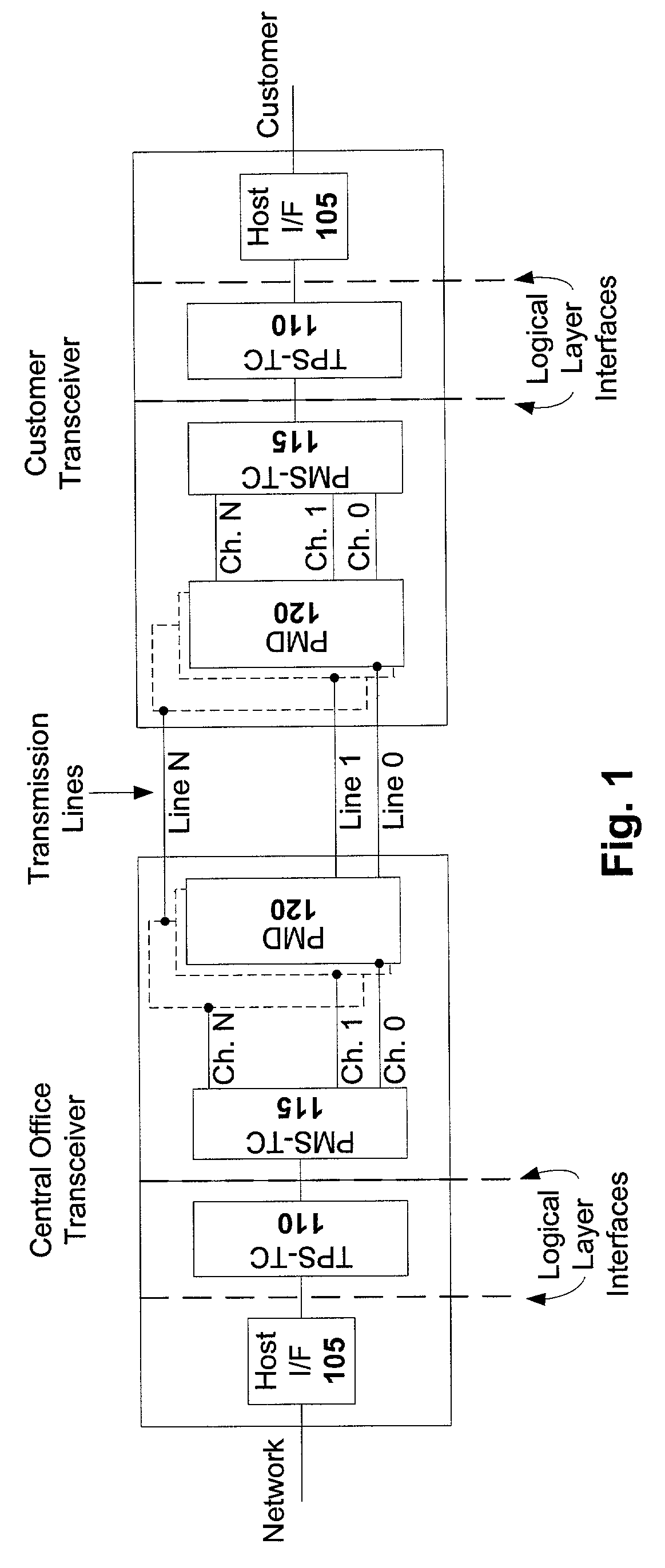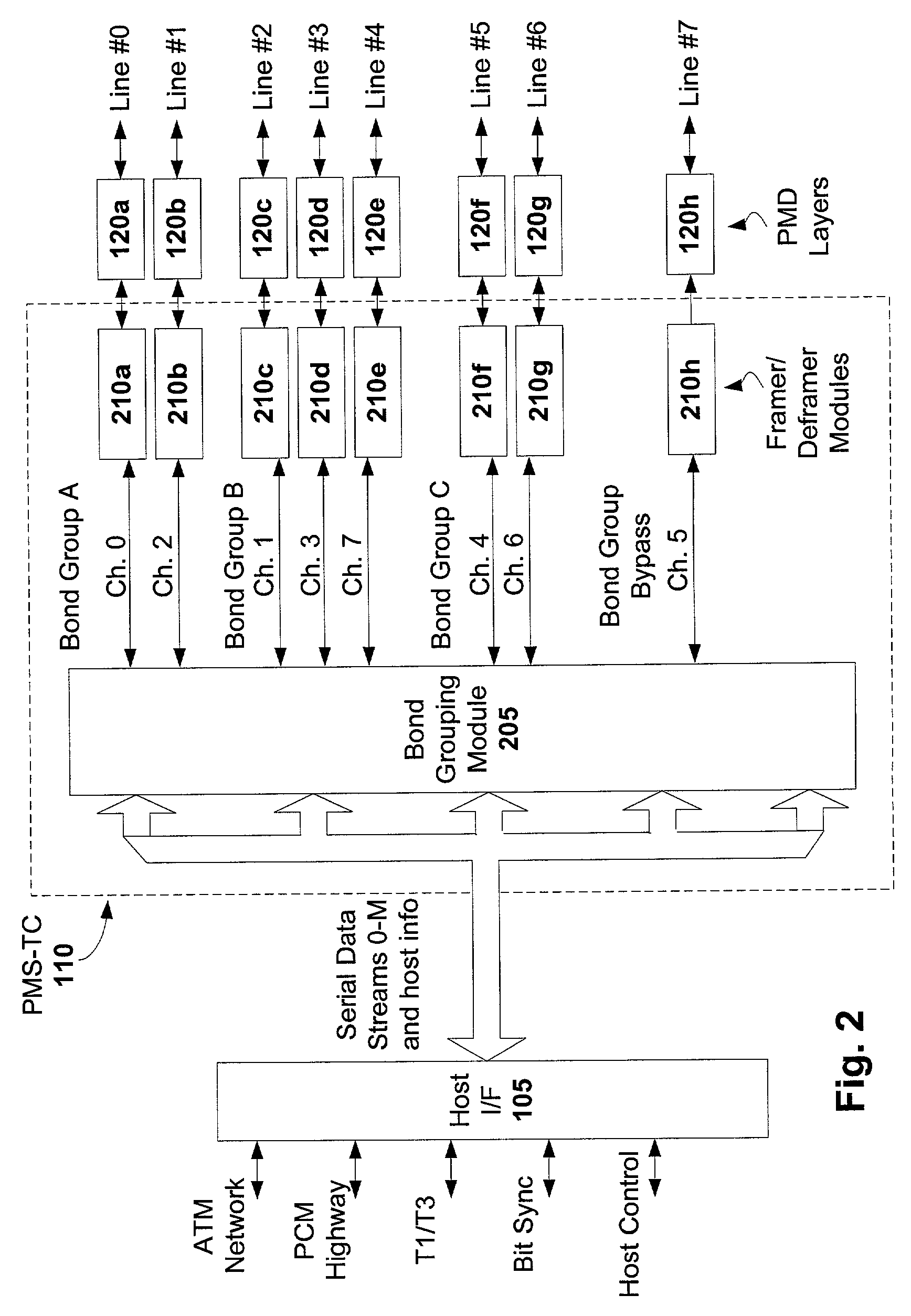Channel bonding in SHDSL systems
- Summary
- Abstract
- Description
- Claims
- Application Information
AI Technical Summary
Benefits of technology
Problems solved by technology
Method used
Image
Examples
Embodiment Construction
[0016]A data stream can be readily transmitted between DSL transceivers over a single twisted pair. By transmitting that data stream over multiple twisted pairs, however, significantly increasing the data rate at which the data stream is transmitted. Thus, transceivers that are configured to operate in an optional multi-pair mode can be highly desirable. Disclosed herein are techniques for carrying out this optional multi-pair mode, which is herein referred to as N channel bonding.
[0017]General Overview
[0018]N-Channel bonding is a technique that provides more transmission bandwidth by dividing a serial data stream into multiple identical framed channels, and coupling those channels to their respective transmission lines. The channels that carry the data from a given serial data stream are referred to as a bond group. The data at the receiving node are recombined from the multiple transmission lines of the bond group to form the original serial data stream. Differential delay between...
PUM
 Login to View More
Login to View More Abstract
Description
Claims
Application Information
 Login to View More
Login to View More - R&D
- Intellectual Property
- Life Sciences
- Materials
- Tech Scout
- Unparalleled Data Quality
- Higher Quality Content
- 60% Fewer Hallucinations
Browse by: Latest US Patents, China's latest patents, Technical Efficacy Thesaurus, Application Domain, Technology Topic, Popular Technical Reports.
© 2025 PatSnap. All rights reserved.Legal|Privacy policy|Modern Slavery Act Transparency Statement|Sitemap|About US| Contact US: help@patsnap.com



